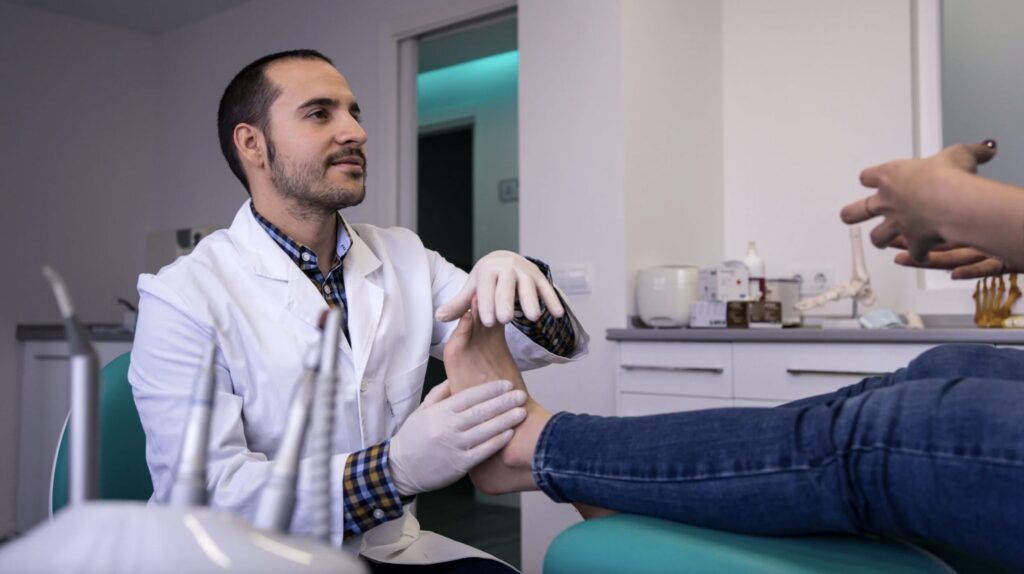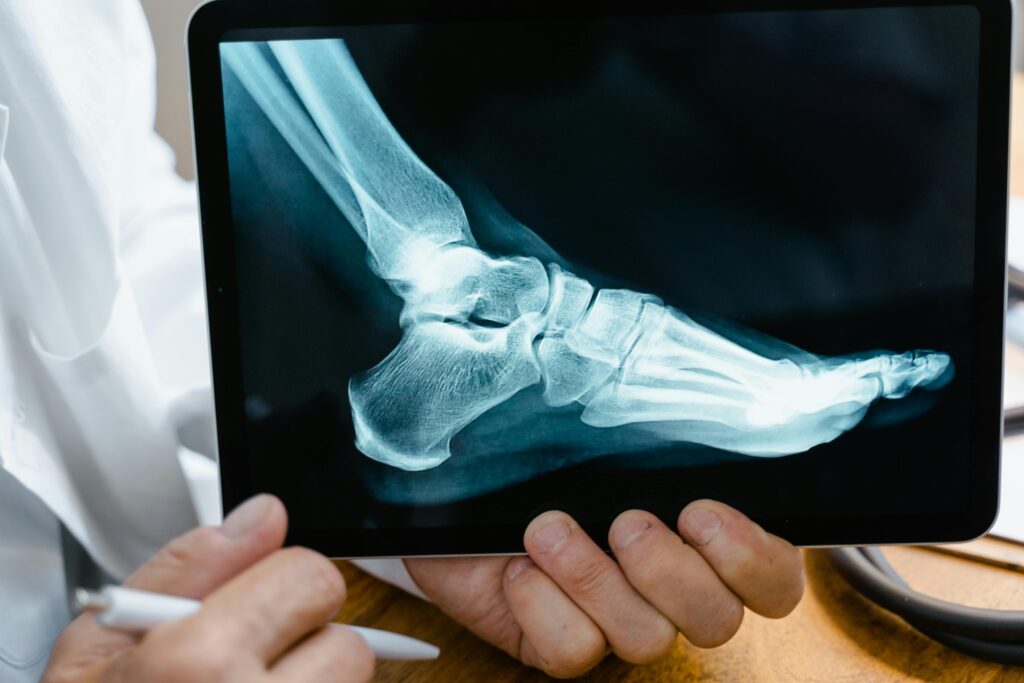
Healthy Feet, Happy Travels: How Your Podiatrist Can Keep You Moving
There’s one part of your body that is essential to making the most of your travel experience.
Here’s a scenario that’ll make you cringe: You’ve spent months planning your dream European getaway. Every detail is meticulously arranged. Your excitement peaks as you step off the plane in Rome, ready to conquer the ancient streets. But within hours? You’re hobbling back to your hotel, defeated by screaming feet that simply can’t handle the cobblestone reality.
Sound familiar? You’re not alone. Too many travelers learn this lesson the hard way. Your feet, those faithful servants that’ll carry you across continents, rarely get the attention they deserve until disaster strikes.
Here’s the truth: foot care isn’t some luxury for the overly cautious. It’s your insurance policy against vacation catastrophe. Smart travelers understand that maintaining healthy feet protects far more than comfort. It safeguards your entire travel investment.

Pre-Travel Foot Health Assessment with Your Local Podiatrist
Think of your feet as high-performance athletes preparing for the Olympics. Would you send an athlete to compete without proper conditioning and assessment? Absolutely not. Your travel adventures demand the same strategic approach.
Here’s something that might surprise you: If diabetes is part of your health picture, your feet face significantly higher risks during travel. Ulcers and infections become genuine threats, primarily because nerve damage and poor circulation create a perfect storm of complications. This reality makes pre-travel planning absolutely critical.
When you’re searching for a qualified podiatrist near me, you need someone who gets it. Someone who understands how travel’s unique stresses can transform minor issues into major headaches, even for otherwise healthy feet.

Comprehensive Foot Examination Before You Go
Professional examination goes way beyond checking for obvious red flags. Your podiatrist becomes a detective, evaluating your gait patterns, mapping pressure points, and examining your feet for subtle warning signs that could explode into major problems during extended walking or standing.
They’ll dive deep into your medical history. Arthritis? Previous injuries? These factors dramatically influence how your feet will respond to travel demands.
The assessment covers everything: circulation checks, nerve function testing, and a thorough evaluation of your current footwear situation. Many travelers discover, often too late, that shoes perfect for daily routines completely fail under the pressure of international sightseeing or mountain hiking.
Identifying Risk Factors for Travel-Related Foot Problems
Travel throws curveballs your feet have never encountered. Those long flights? They create swelling and circulation nightmares. Different climates mess with how your feet handle heat, humidity, or freezing temperatures. Extended walking on unfamiliar terrain creates stress patterns your feet simply aren’t trained to manage.
Your podiatrist acts as a risk assessment specialist, identifying personal vulnerability points based on your foot architecture, existing conditions, and planned activities. Maybe you’re a blister magnet. Perhaps your arches need support that standard shoes can’t provide.

Preventive Treatments Available from Podiatrists Near Me
Prevention beats panic-mode treatment every single time, especially when you’re stranded thousands of miles from home. Your podiatrist might recommend anything from simple footwear adjustments to targeted interventions like custom orthotics or specific strengthening exercises for vulnerable areas.
These preventive strategies often address seemingly minor issues that could mushroom into vacation-destroying problems. Early-stage fungal infections or calluses that seem insignificant? They can become major complications with increased travel activity.
Essential Travel Foot Care Preparation
You’ve identified your baseline foot health and risk factors through professional assessment. Now comes the fun part: transforming that knowledge into a bulletproof preparation strategy. Your podiatrist’s recommendations become your roadmap for building a personalized travel foot care game plan.

Custom Orthotic Solutions for Extended Walking
Generic drugstore insoles? They’re about as useful as a chocolate teapot for serious travelers. Custom orthotics are engineered specifically for your feet, targeting your unique pressure points and delivering support exactly where you need it most. For travelers planning extensive walking tours or hiking adventures, they’re not optional; they’re essential.
The investment in custom orthotics pays massive dividends when you consider the true cost of disrupted travel plans due to foot pain. They’re often the difference between enjoying a full day of exploration and cutting activities short because your feet wave the white flag.
Building Your Professional-Grade Travel Foot Care Kit
A proper foot care kit transcends basic first aid. You need moisture-wicking socks, antifungal powder, blister prevention products, and any prescription treatments your podiatrist specifically recommends. The secret weapon? Having supplies that match your specific needs and planned activities.
Pro tip: Pack backup supplies of any medications or treatments you use regularly. Running out of prescription foot medication in rural Thailand creates complications you can easily avoid with smart planning.

Prescription-Strength Preventive Treatments
Sometimes over-the-counter solutions simply don’t cut it. Your podiatrist might prescribe antifungal treatments, pain management solutions, or specialized creams that provide protection far beyond standard travel products. These treatments become absolutely critical for travelers with chronic conditions or those venturing into challenging climates.
Technology and Innovation in Travel Foot Health
Traditional preventive protocols remain foundational, but cutting-edge technology is completely revolutionizing how travelers monitor and maintain foot health in real-time. These innovative tools help prevent emergencies before they strike.
Here’s a sobering reality: Heel pain devastates countless travelers, with plantar fasciitis being a particularly common culprit, causing sharp, stabbing pain in the heel, especially when you first roll out of bed in the morning.
But here’s the good news: a podiatrist can develop a comprehensive treatment plan to eliminate the pain. Modern technology now helps monitor and manage such conditions during travel.
Wearable Devices for Monitoring Foot Health During Travel
Smart insoles and fitness trackers can now monitor pressure distribution, track daily walking distances, and even alert you to potential problems before they become a painful reality. These devices provide real-time feedback about how your feet are handling travel stresses.
Advanced wearables can detect subtle changes in your gait that might indicate developing issues, allowing you to adjust activities or seek treatment before problems escalate into vacation-ruining scenarios.
Mobile Apps for Foot Care Tracking and Reminders
Smartphone apps designed specifically for foot care can remind you to perform stretches, track symptoms, and even connect you with podiatric professionals for virtual consultations. These tools prove invaluable for managing ongoing conditions while traveling.
Many apps include features for photographing and tracking changes in your feet, incredibly helpful for documenting issues that develop during travel and sharing them with your healthcare provider back home.
Smart Footwear Technology for Travelers
Advanced travel shoes now incorporate technology like adaptive cushioning, climate control, and even built-in pressure monitoring. While these innovations are still emerging, they represent the future of travel foot care technology.
Smart shoes can adjust their support and cushioning based on your activity level and walking surfaces, providing personalized comfort throughout your entire journey.

Age-Specific Travel Foot Care Protocols
Technology offers powerful solutions for all travelers, but optimal foot care must account for individual life stages and health conditions. Different age groups face unique foot health challenges requiring tailored approaches.
Diabetic Traveler Special Precautions
Diabetic travelers need extra vigilance regarding foot pain relief and prevention. Blood sugar fluctuations during travel affect circulation and healing, potentially transforming minor foot injuries into serious complications. Daily foot inspections become absolutely critical when you’re away from your regular healthcare team.
Diabetic travelers should pack extra supplies: glucose testing materials and specialized wound care products recommended by their podiatrist. Research medical facilities at your destination, just in case urgent care becomes necessary.
Senior Traveler Foot Health Considerations
Aging affects foot structure, circulation, and healing capacity. Senior travelers often benefit from more frequent rest breaks, supportive footwear changes throughout the day, and extra attention to circulation during long flights or car rides.
Balance issues increase fall risks on unfamiliar terrain, making proper footwear selection absolutely critical for older travelers.

Active Lifestyle Needs
Younger travelers or adventure-seekers face different challenges. They might need foot pain relief strategies for overuse injuries or specialized protection for extreme sports. The focus shifts from managing chronic conditions to preventing acute injuries from high-impact activities.
Your Travel Foot Health Questions Answered
1. What problems do podiatrists treat?
Podiatrists treat a wide range of foot and ankle problems, including bunions, heel pain, ingrown toenails, plantar fasciitis, fractures, and diabetic foot issues. Their care helps relieve pain, prevent complications, and keep patients moving comfortably.
2. What can podiatrists not do?
Podiatrists cannot delegate invasive procedures and must remain chairside during treatments like laser therapy or nail care that could be invasive, ensuring patient safety through direct supervision.
3. When should I see a podiatrist before traveling?
Schedule your appointment 2-4 weeks before departure to allow time for recommended treatments or custom orthotic creation while avoiding last-minute complications.




